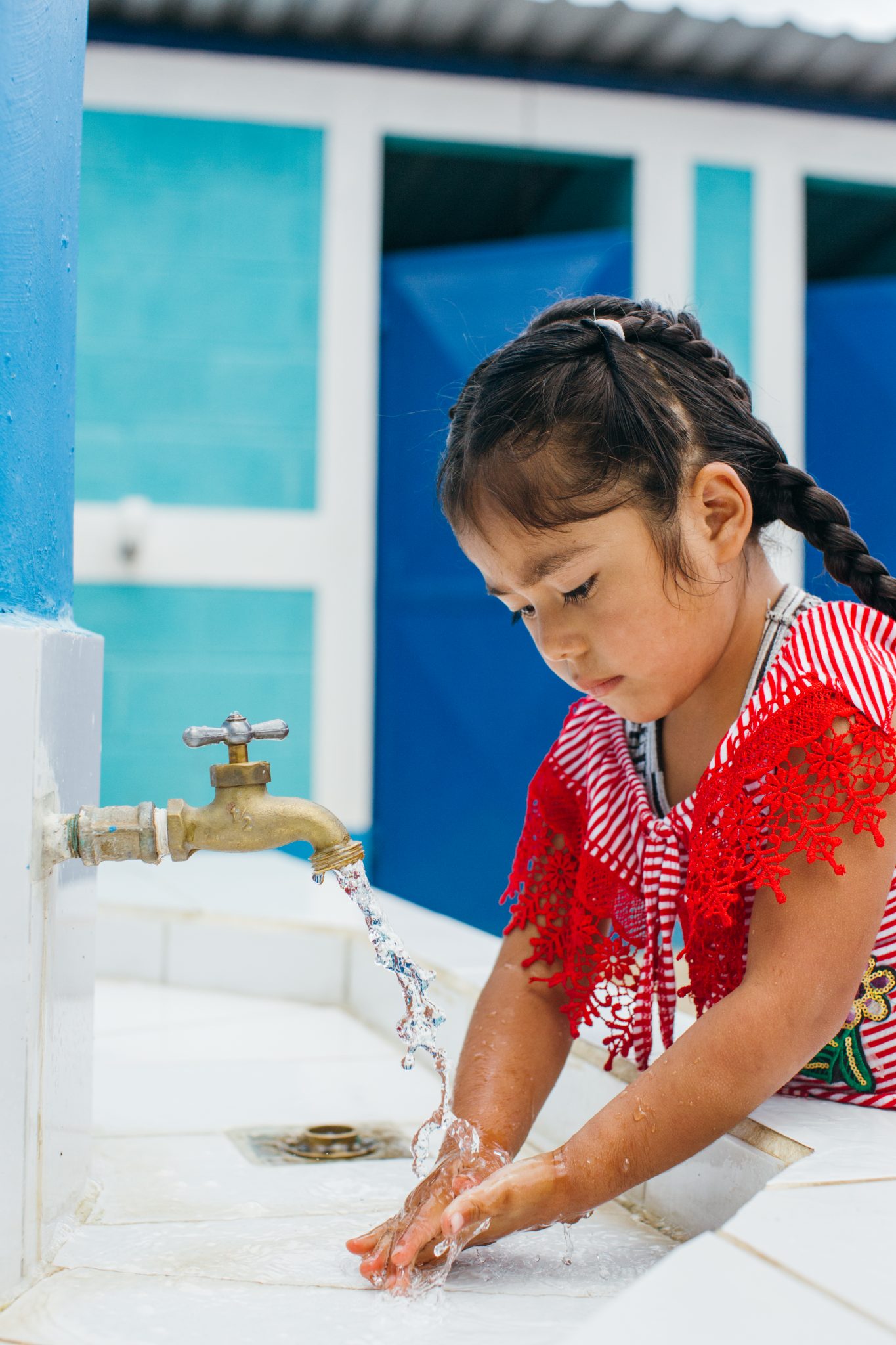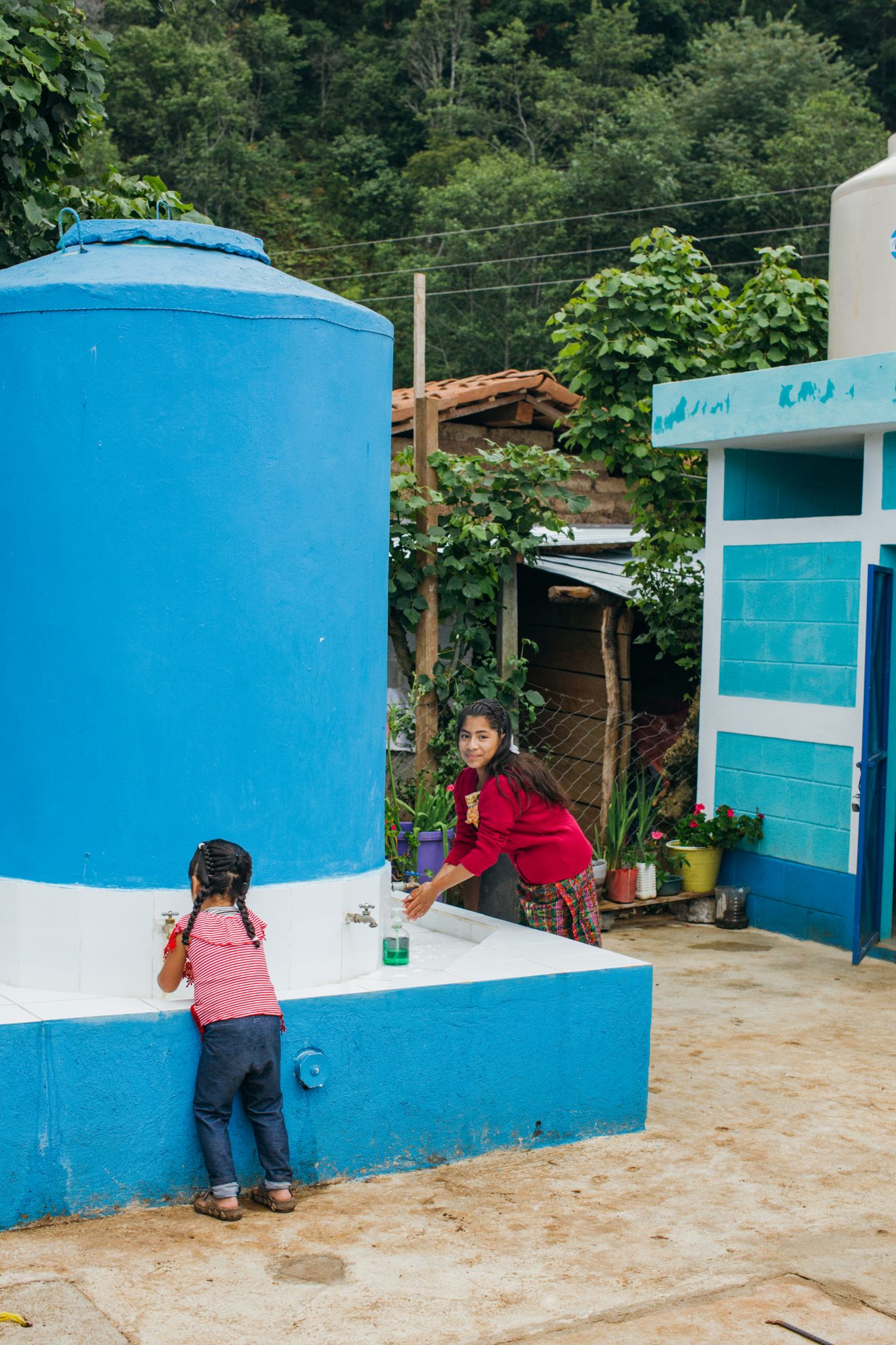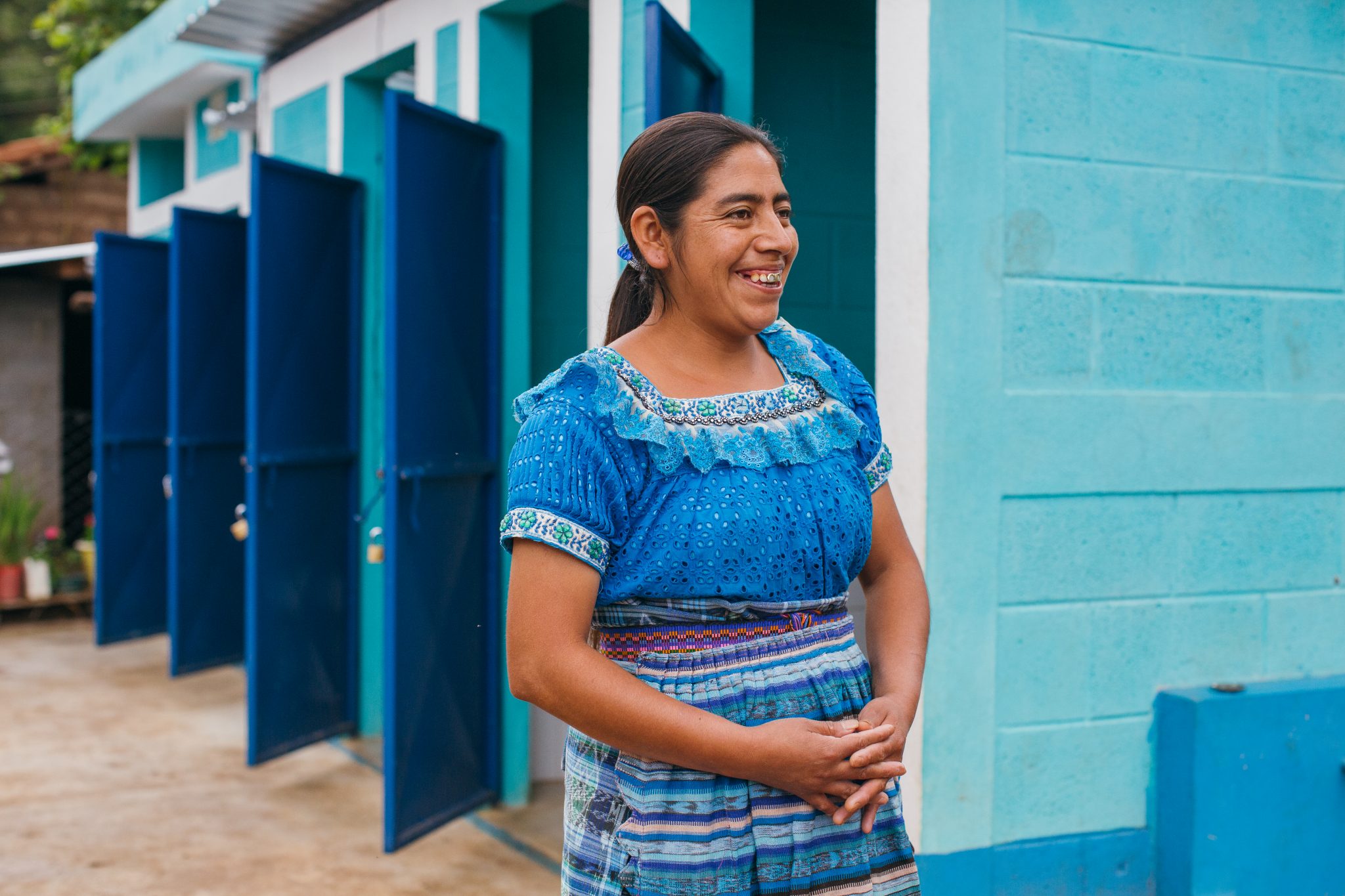Growing up, Santana remembers watching her neighbors carry water every day. She never gave up hope that this would change.
Santana was born in Lagunitas, in the district of Santa Cruz del Quiché. It’s a rural village in the far north of Guatemala, close to the Mexico border. Her childhood memories include people carrying water in bottles from unprotected wells and contaminated rivers. She recalls that children would often have diarrhea, gastrointestinal issues, and parasites – the result of drinking this dirty water. They also didn’t have enough water to wash their hands before eating, and most of the community lacked access to proper toilets. Despite all of this, Santana didn’t move away from Lagunitas. She never gave up hope that the conditions surrounding water access would change.
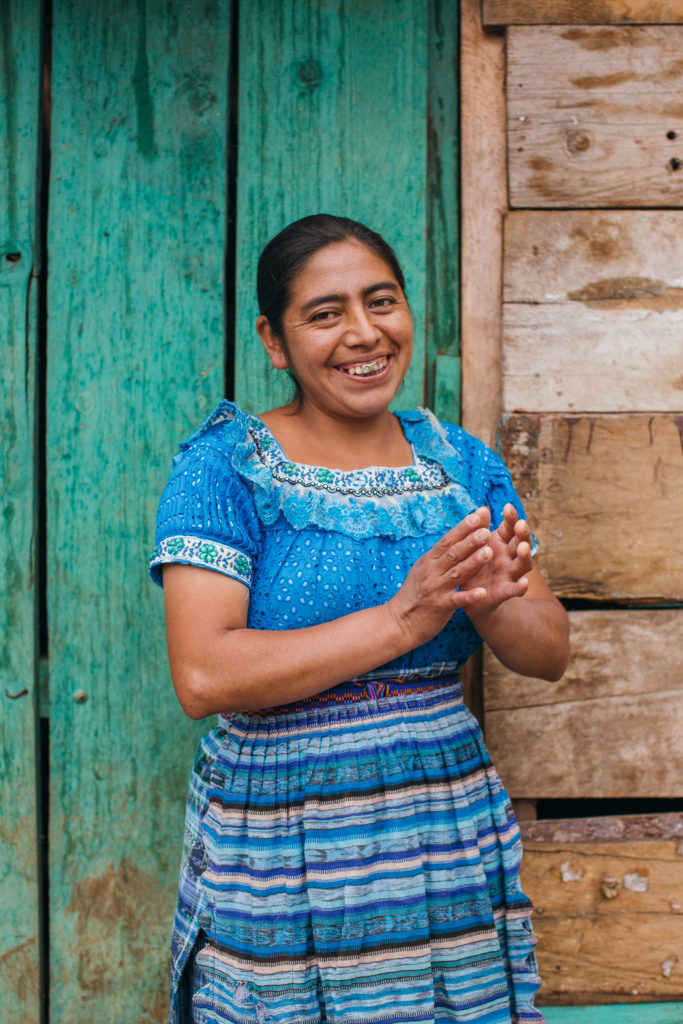
She knew her community needed better access to safe water, and when her children reached school age she knew she had to be the one to act. Santana’s hope led to action.
To her great frustration, she was unable to provide her kids a snack, or refacción. In Lagunitas, the most common refacción is a drink that requires water. She soon learned she was not alone in this challenge. The other mothers also struggled to provide this snack because there wasn’t enough water. And the water that was available was dirty.
"I knew my community needed access to water, so I searched for an institution that could provide assistance," explains Santana. She eventually found the Water For People office and connected with the lead engineer who explained that the organization could help if the community was able to co-invest in the project. Many people were opposed to the idea and did not want to contribute time or money.
"Even though it took me a long time to persuade the community members to join, I knew it was worth it when I saw how children and mothers were suffering from the lack of clean water," Santana says.
After four years of trying to persuade her community and explaining the benefits of access to clean water, the community members eventually followed Santana’s leadership and organized to make the project a reality.
A three-way partnership was established with the municipality providing funding and construction managers, Water For People covering the cost of the construction materials, and the local community helping with manual labor.
"Many people think that accomplishing a project like this is easy when in reality, it is very difficult. Challenges arose with finding the right water source, coordinating the labor and materials, working around difficult terrain, and motivating community members," explains Santana, who ultimately led the community side of the project.
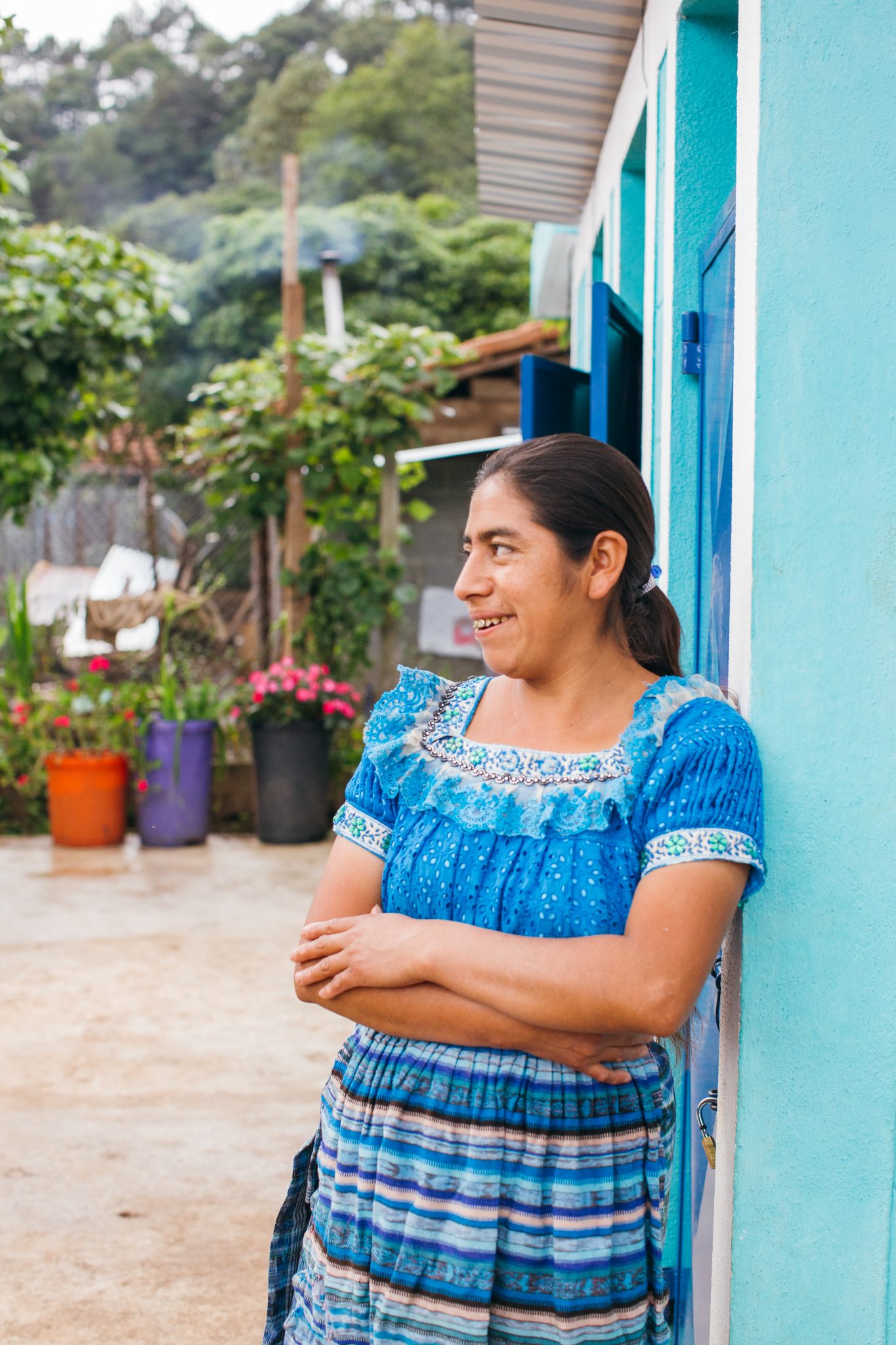
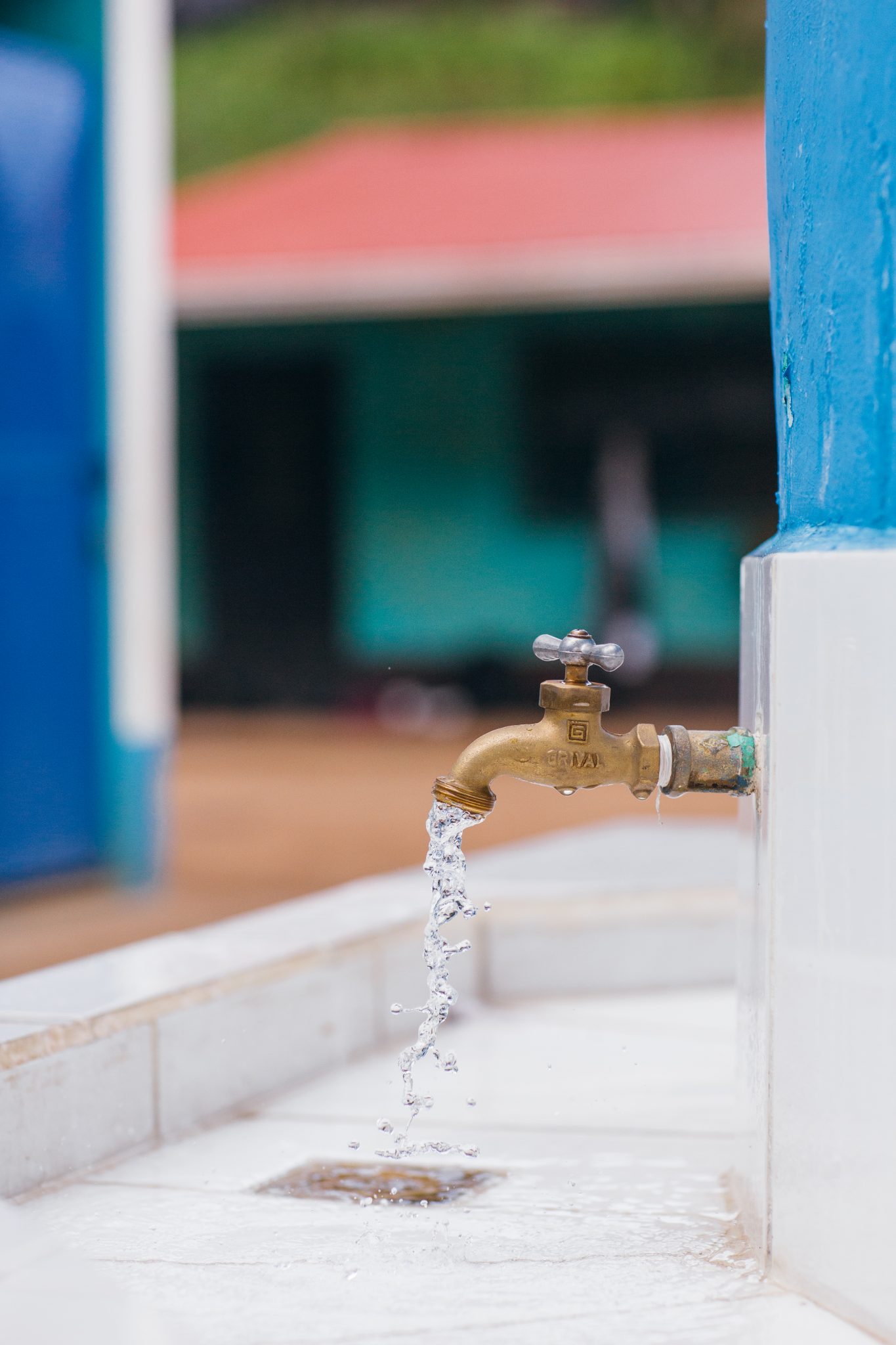
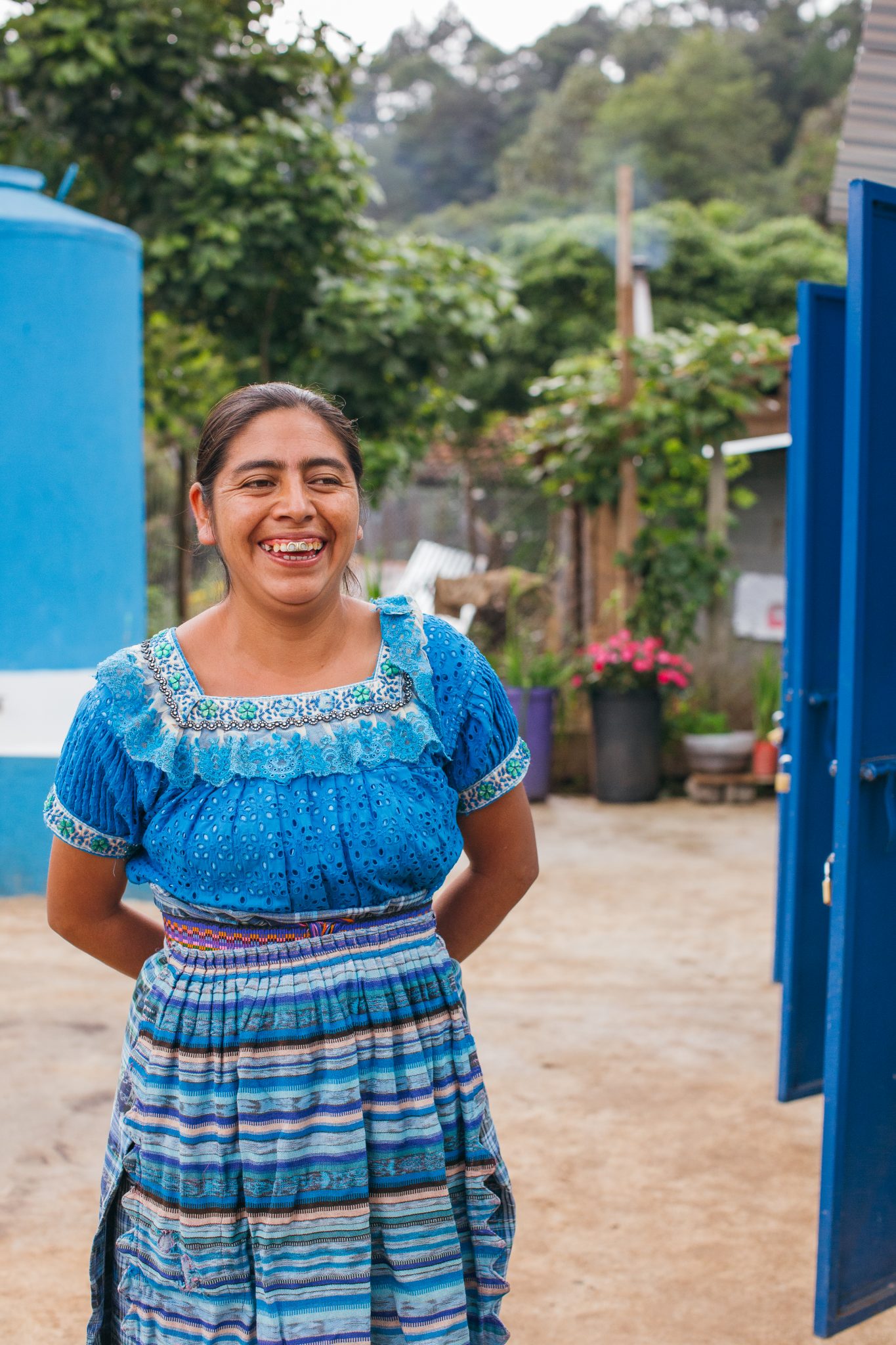
Within two years, Water For People helped connect the community with a clean water source by installing 35 connections in homes and at the school, and providing infrastructure for water purification. Additionally, toilets were installed, and the community members took part in educational trainings to learn better hygiene practices.
"Before, it was very risky to drink water in the community," reflects Santana. "Now I feel very happy when I see children drink water directly from the faucet because I know it is purified."
Although the construction of the project is complete, the work is far from over. "There are now five community members, including me, who are in charge of maintaining the pipes and facilities. Through this work, I continue to lead my community and make sure that we continue to learn about the importance of caring and appreciating the value of water," she says.
Santana feels grateful for the chance to lead her community into a better future. Grateful that she never gave up hope, and that her hope led to profound transformations. "I’m grateful that I have been able to advocate for change that benefits my home, my family, and my community."
Santana’s hope turned to action, her action to change – a world of change for the hundreds of children in her community who will never grow up with memories of walking to collect or drink contaminated water.
